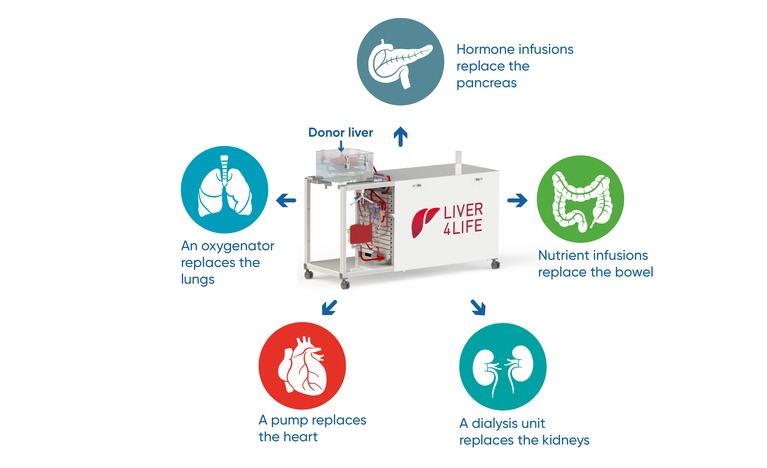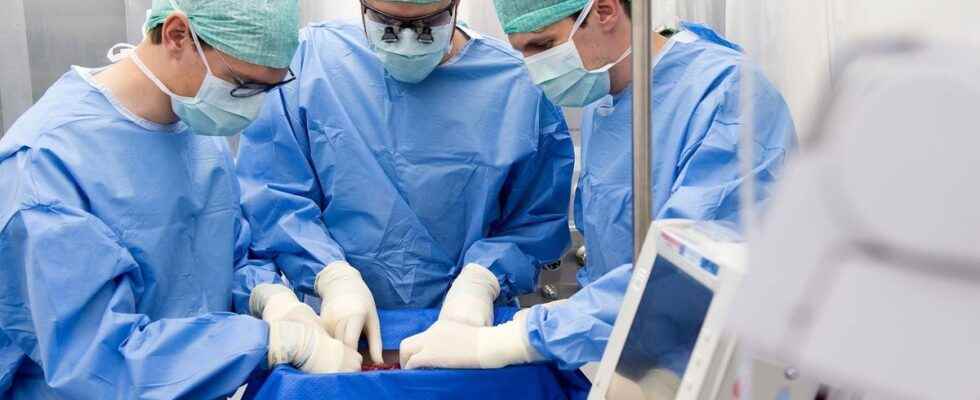Posted 20m ago,
Reading 2 mins.
Will it soon be possible to perform organ transplants without time constraints? This is the hope born following the transplantation carried out by a research team from the University Hospital of Zurich (Switzerland) of a damaged human liver, treated for three days in a machine before transplanting it. The patient who suffered from advanced cancer is doing well.
A “fixed” liver graft in three days
Has the Liver4Life research team at the University Hospital of Zurich paved the way for organ transplants beyond common deadlines? In any case, the Swiss researchers announce that they have successfully transplanted a human liver three days after its removal using equipment that reproduces the functions of the body: a pump to mimic the heart, an oxygenator as lungs and a dialysis unit. for the kidneys. Infusions of hormones and nutrients, for their part, maintained the functions of the intestine and the pancreas. And in the absence of a diaphragm, the machine adopts the rhythm of human breathing, thus allowing the liver not to remain inert.
As for the removed liver, which is also said to have been damaged, without further details – we generally speak of “marginal grafts” for organs from elderly donors – it underwent treatment to give it back all the qualities necessary for its viability and the safety of the recipient. For three days, the organ received infusions of various drugs, including antibiotic therapies, and treatments aimed at optimizing hepatic metabolism.
Between 6 and 8 p.m. normally
All this preparation work is not possible with the infusion machines usually used, whether the classic ones, which keep the grafts at a temperature between 4 and 6°, or the more experimental ones called ” normothermic”, in which the liver is irrigated with the donor’s blood and thus maintained at a body temperature of 37°. “In the latter case, the liver loses less energy and oxygen, so the organ can be kept in good condition for up to 8 p.m., allowing preparation for the transplant, which otherwise often takes place at night.”, explains André Le-Tutour, vice-president of the Transhépate association.

In fact, more often than not, liver transplantation is considered an emergency procedure: it must be performed within six hours to minimize liver damage. Admittedly, the technique used by the interdisciplinary Liver4Life team must be duplicated, and demonstrate its effectiveness and safety over the long term, but the future may lie in the planning of interventions.
One graft for three recipients
“Our method of infusion treatment shows that it is possible to store livers and save lives”, welcomes Professor Pierre-Alain Clavien, head of the visceral surgery and transplantation center at the University Hospital of Zurich. Announced on May 31, this world first, as presented by its authors, was carried out in May 2021, on a patient who suffered from advanced stage liver cancer. A year later, he resumed a normal life, and without complications of any kind.
If caution is in order, André Le-Tutour reminds us that in France there are “one graft for 2 to 3 recipients”, which is insufficient. In 2020, liver transplants fell to 1,128, compared to 1,374 in 2017, due to the Covid-19 crisis. An unprecedented treatment which could make it possible to “catch up” with livers not eligible for transplantation, without haste, constitutes stimulating and encouraging news for the thousands of patients awaiting a transplant.

